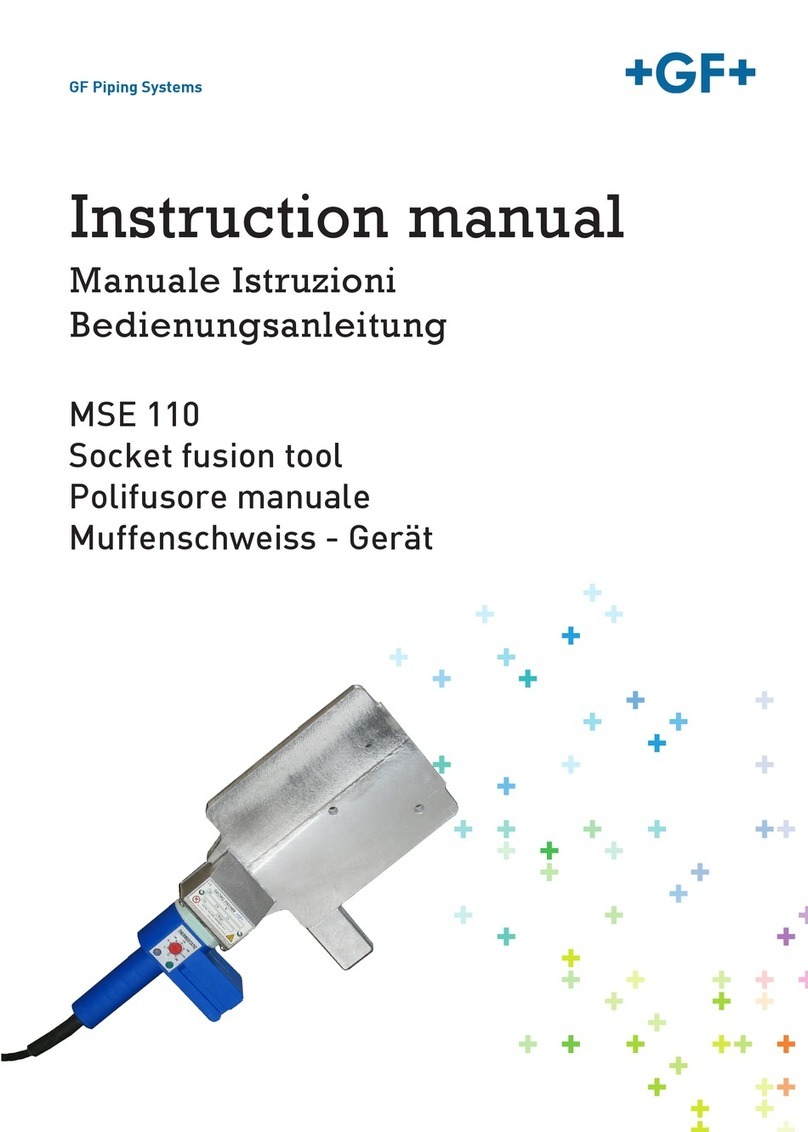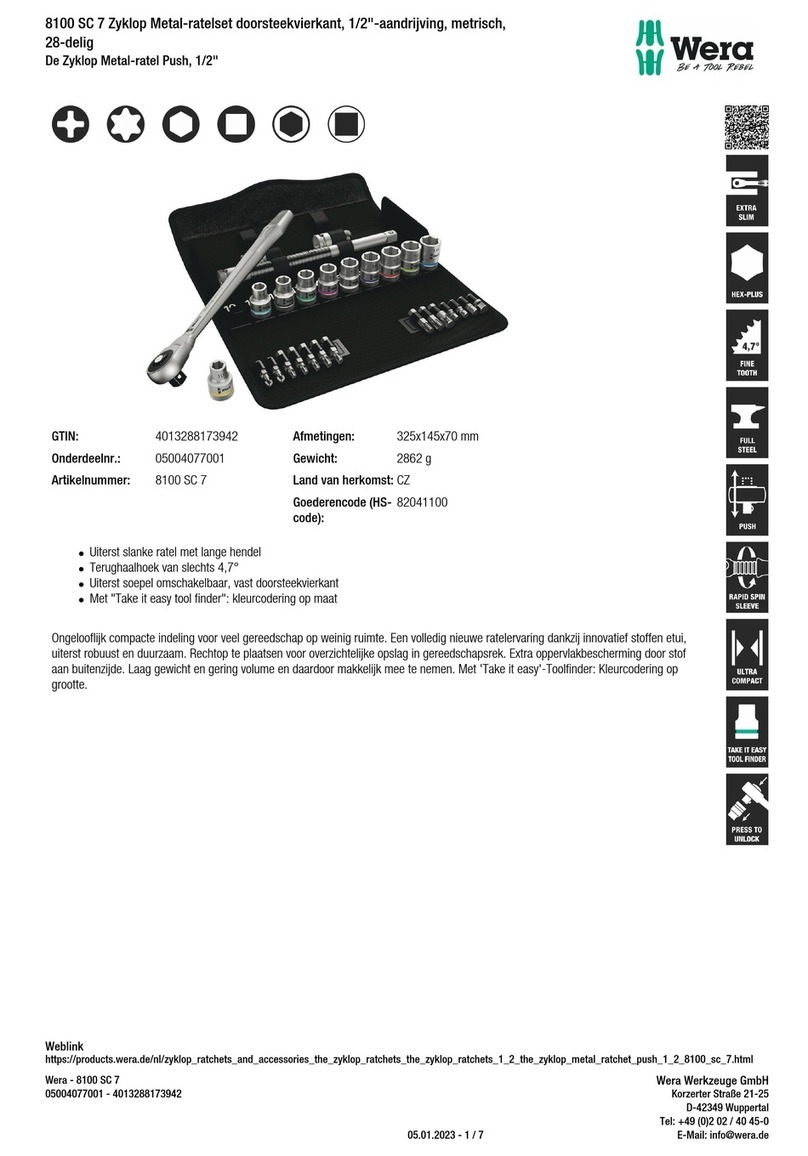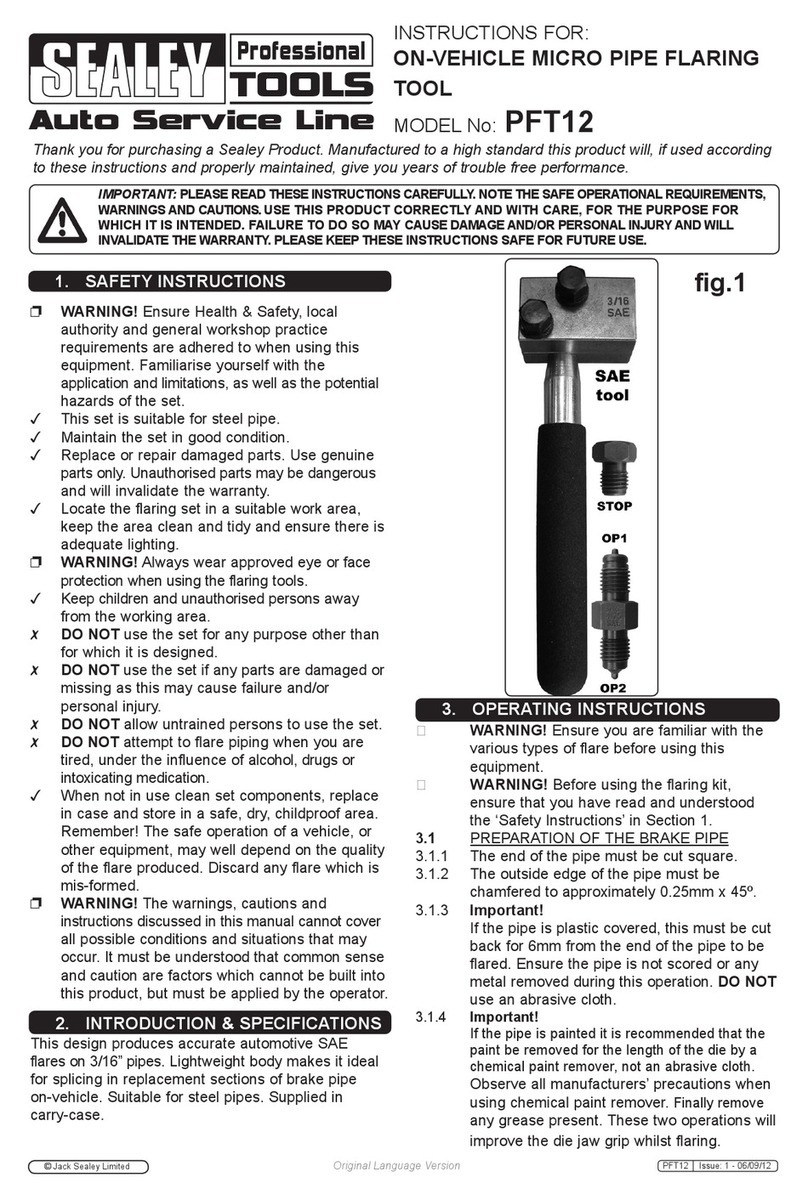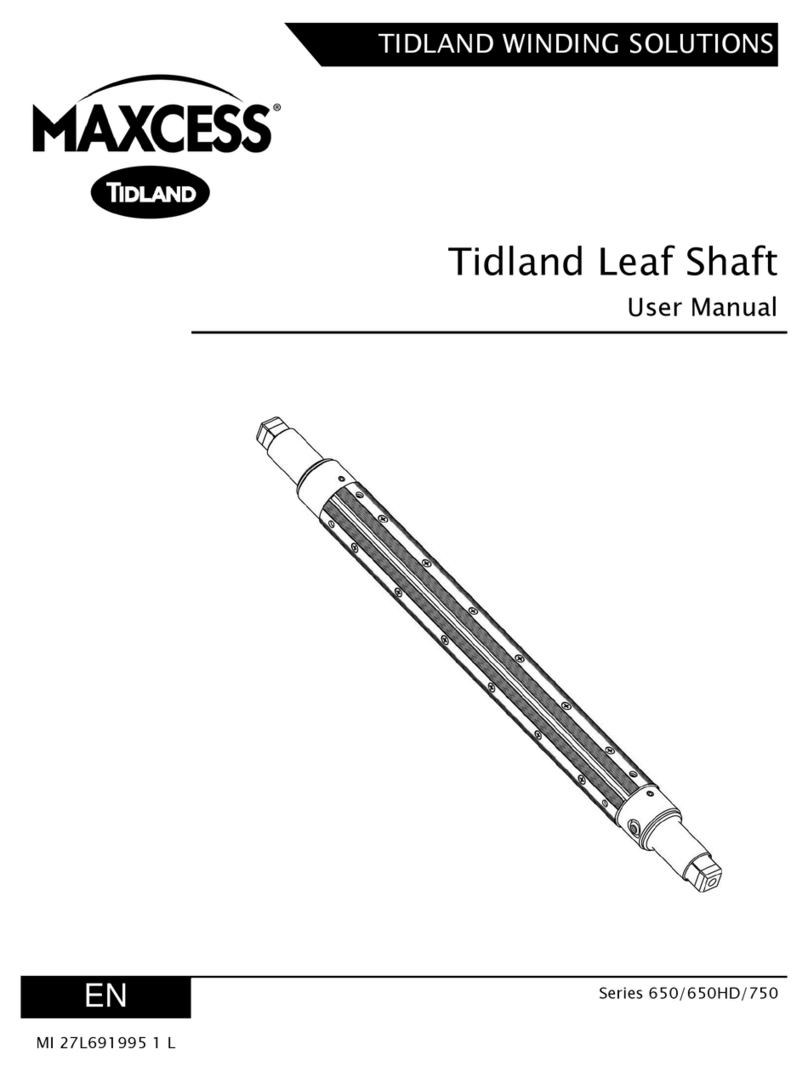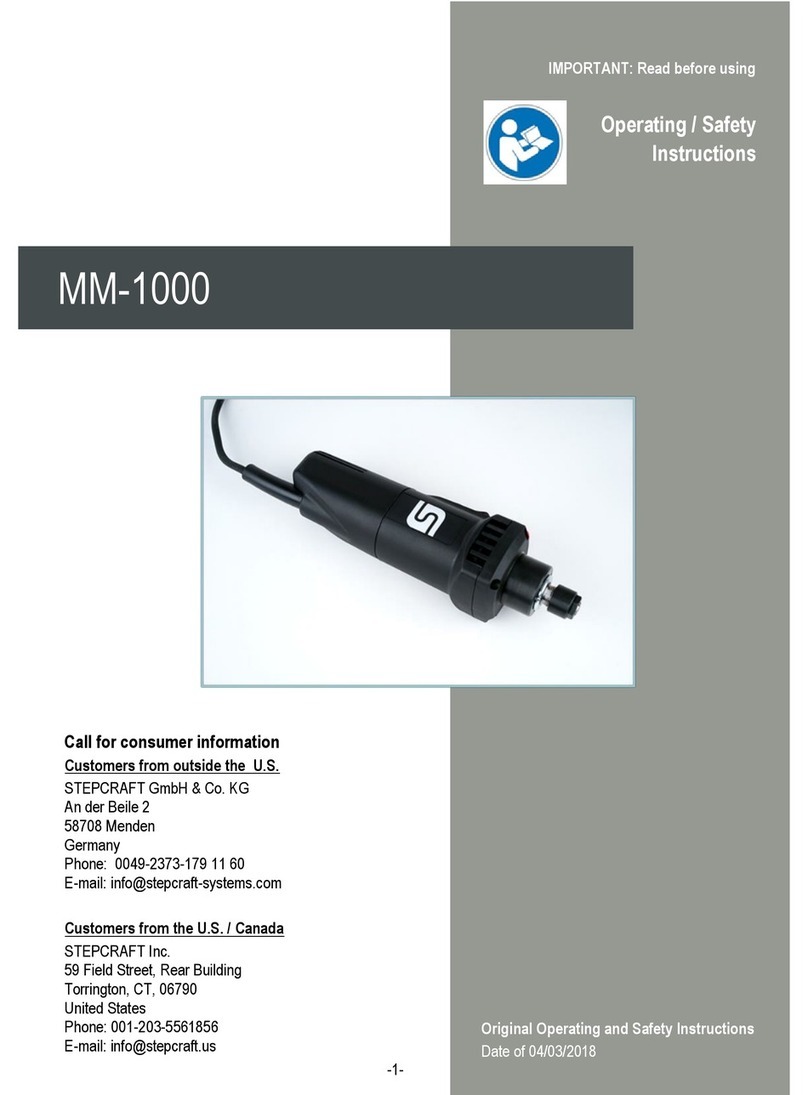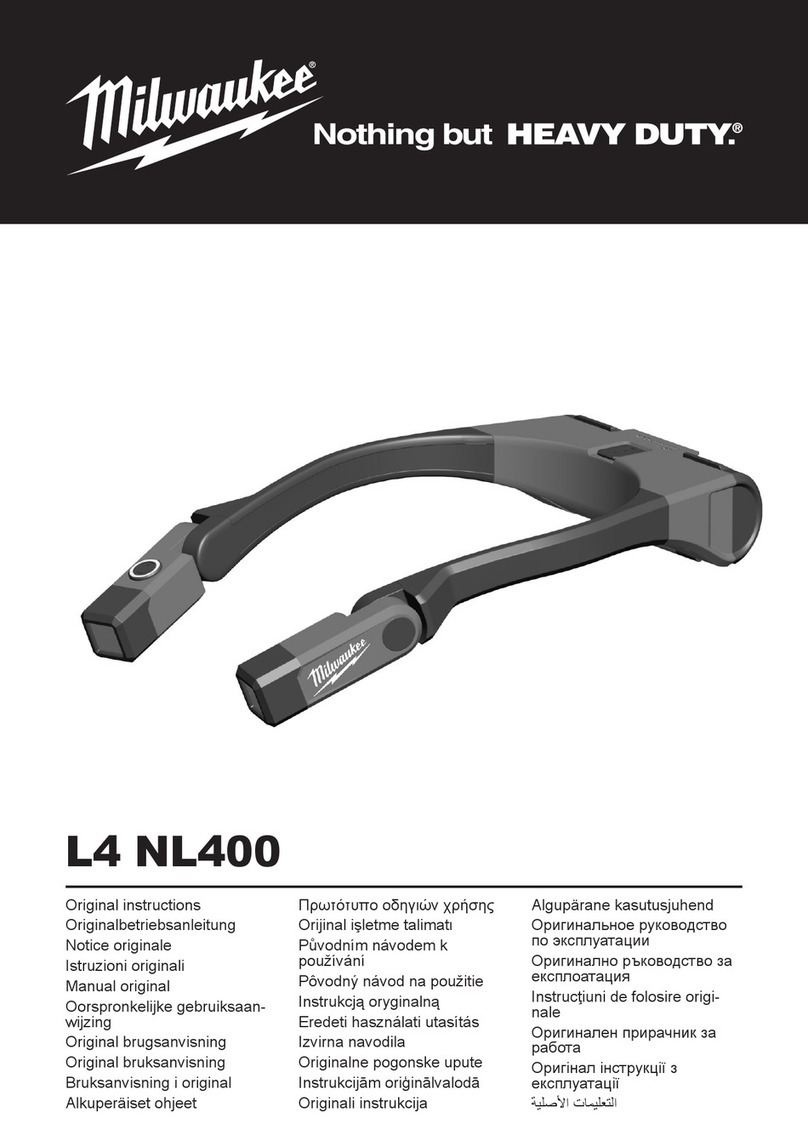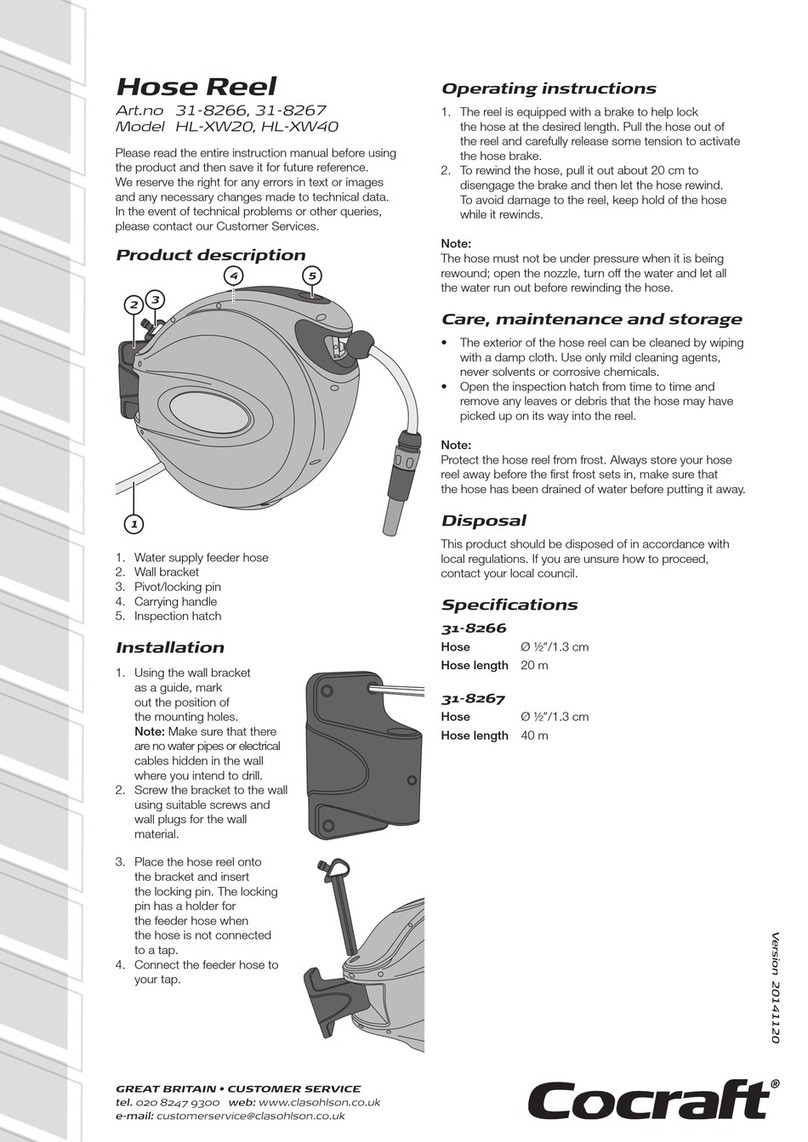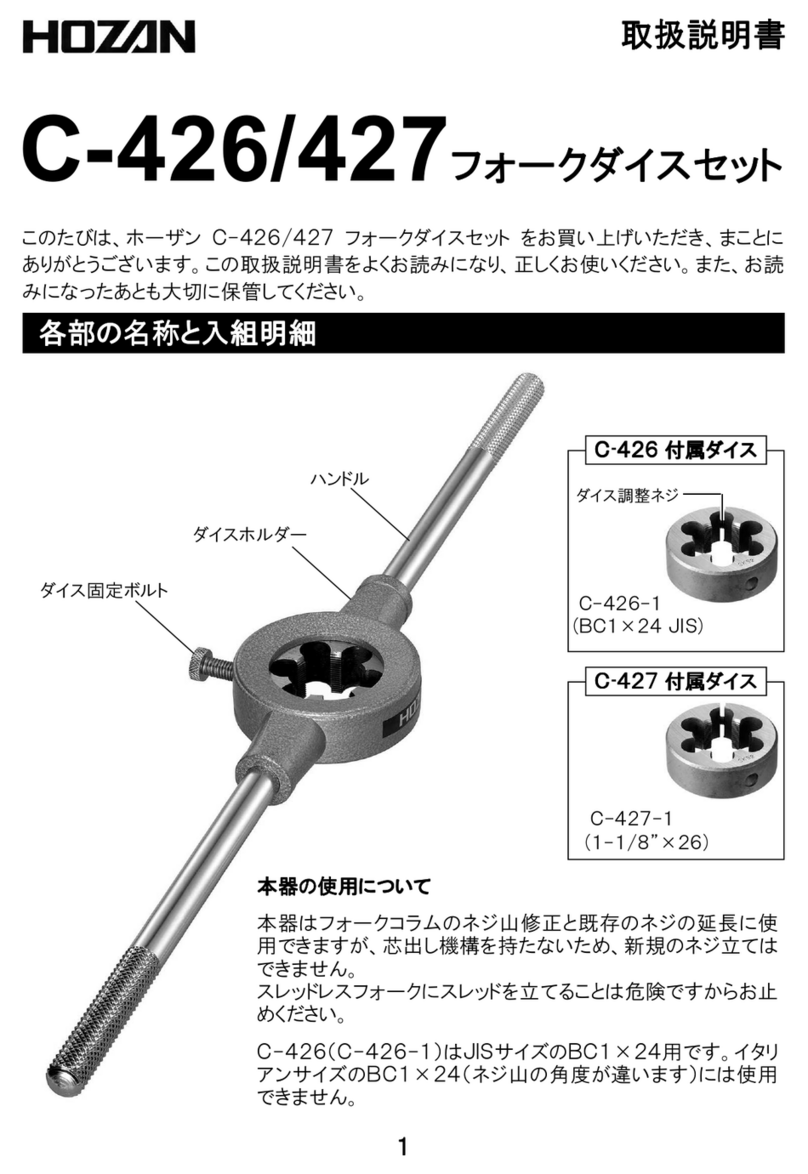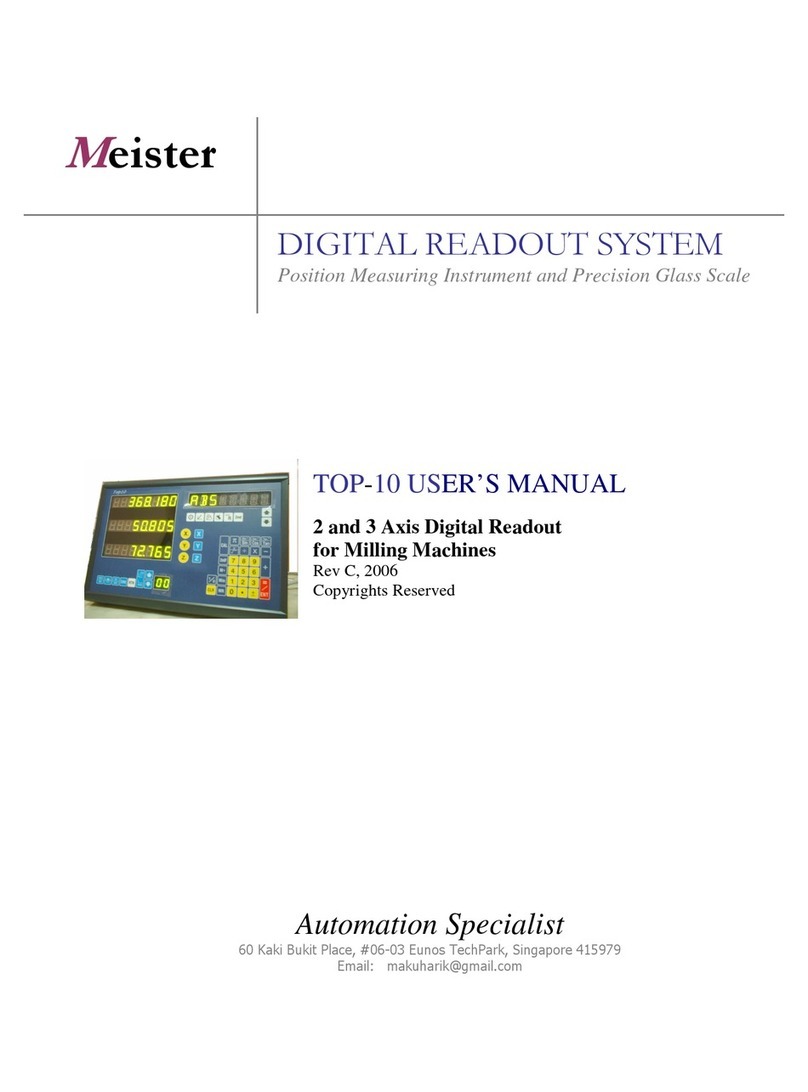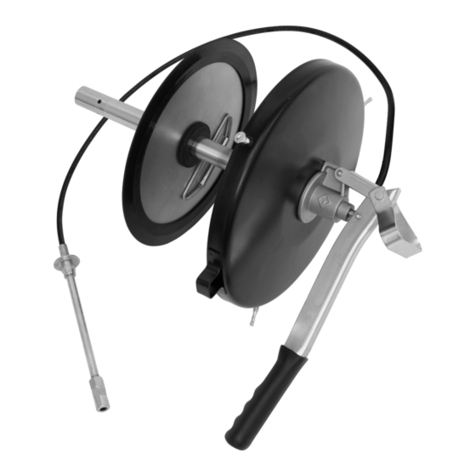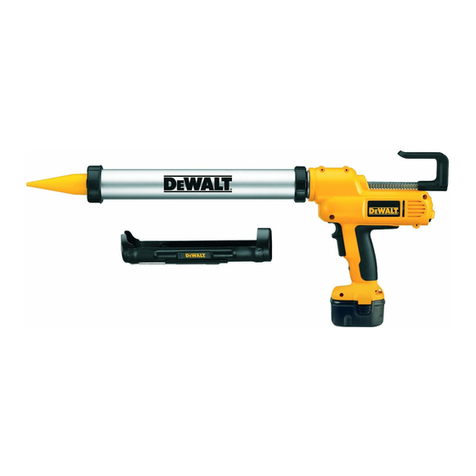Electro Industries/GaugeTech Shark 100S User manual

V.1.24
User Manual
V.1.24
July 3, 2020

This page intentionally left blank.

Doc# E145721 i
Electro Industries/GaugeTech
™
Powered by Innovation™
Shark® 100S Meter Installation and Operation Manual Version 1.24
Published by:
Electro Industries/GaugeTech
1800 Shames Drive
Westbury,NY 11590
All rights reserved. No part of this publication may be reproduced or transmitted in
any form or by any means, electronic or mechanical, including photocopying, record-
ing, or information storage or retrieval systems or any future forms of duplication, for
any purpose other than the purchaser's use, without the expressed written permission
of Electro Industries/GaugeTech.
© 2020 Electro Industries/GaugeTech
Shark® is a registered trademarks of Electro Industries/GaugeTech. The distinctive
shapes, styles and overall appearances of the Shark® meters are trademarks of
Electro Industries/GaugeTech. CommunicatorPQATM , MeterManagerPQATM, EnergyRe-
porterPQATM, HMIPQATM, EnergyPQA.comTM, and V-SwitchTM key are trademarks of
Electro Industries/GaugeTech.
Windows® is either a registered trademark or trademark of Microsoft Corporation in
the United States and/or other countries.
Modbus® is a registered trademark of Schneider Electric, licensed to the Modbus
Organization, Inc.

Doc# E145721 ii
Electro Industries/GaugeTech
™
Powered by Innovation™
This page intentionally left blank.

Doc# E145721 iii
Electro Industries/GaugeTech
™
Powered by Innovation™
Customer Service and Support
Customer support is available 8:00 am to 8:00 pm, Eastern Standard Time, Monday
through Friday. Please have the model, serial number and a detailed problem descrip-
tion available. If the problem concerns a particular reading, please have all meter
readings available. When returning any merchandise to EIG, a return materials
authorization number is required. For customer or technical assistance, repair or
calibration, phone 516-334-0870 or fax 516-338-4741.
Product Warranty
Electro Industries/GaugeTech (EIG) warrants all products to be free from defects in
material and workmanship for a period of four years from the date of shipment.
During the warranty period, we will, at our option, either repair or replace any product
that proves to be defective.
To exercise this warranty, fax or call our customer-support department. You will
receive prompt assistance and return instructions. Send the instrument, transporta-
tion prepaid, to EIG at 1800 Shames Drive, Westbury, NY 11590. Repairs will be made
and the instrument will be returned.
This warranty does not apply to defects resulting from unauthorized modification,
misuse, or use for any reason other than electrical power monitoring. The Shark®
100S meter is not a user-serviceable product.
THIS WARRANTY IS IN LIEU OF ALL OTHER WARRANTIES, EXPRESSED
OR IMPLIED, INCLUDING ANY IMPLIED WARRANTY OF MERCHANTABIL-
ITY OR FITNESS FOR A PARTICULAR PURPOSE. ELECTRO INDUSTRIES/
GAUGETECH SHALL NOT BE LIABLE FOR ANY INDIRECT, SPECIAL OR
CONSEQUENTIAL DAMAGES ARISING FROM ANY AUTHORIZED OR
UNAUTHORIZED USE OF ANY ELECTRO INDUSTRIES/GAUGETECH
PRODUCT. LIABILITY SHALL BE LIMITED TO THE ORIGINAL COST OF
THE PRODUCT SOLD.

Doc# E145721 iv
Electro Industries/GaugeTech
™
Powered by Innovation™
Use Of Product for Protection
Our products are not to be used for primary over-current protection. Any protection
feature in our products is to be used for alarm or secondary protection only.
Statement of Calibration
Our instruments are inspected and tested in accordance with specifications published
by Electro Industries/GaugeTech. The accuracy and a calibration of our instruments
are traceable to the National Institute of Standards and Technology through
equipment that is calibrated at planned intervals by comparison to certified standards.
For optimal performance, EIG recommends that any metering device, including those
manufactured by EIG, be verified for accuracy on a yearly interval using NIST trace-
able accuracy standards. In general, EIG metering devices should not require regular
adjustments to maintain published accuracy.
Disclaimer
The information presented in this publication has been carefully checked for
reliability; however, no responsibility is assumed for inaccuracies. The information
contained in this document is subject to change without notice.
Safety Symbols
In this manual, this symbol indicates that the operator must refer to
an important WARNING or CAUTION in the operating instructions.
Please see Chapter 4 for important safety information regarding
installation and hookup of the meter.
AVERTISSEMENT ou une MISE EN GARDE dans les instructions opérationnelles. Veuil-
lez consulter le chapitre 4 pour des informations importantes relatives à l’installation
et branchement du compteur.
The following safety symbols may be used on the meter itself:
Les symboles de sécurité suivante peuvent être utilisés sur le compteur même:
This symbol alerts you to the presence of high voltage, which can
cause dangerous electrical shock.
Ce symbole vous indique la présence d’une haute tension qui peut
provoquer une décharge électrique dangereuse.

Doc# E145721 v
Electro Industries/GaugeTech
™
Powered by Innovation™
This symbol indicates the field wiring terminal that must be connected
to earth ground before operating the meter, which protects against
electrical shock in case of a fault condition.
Ce symbole indique que la borne de pose des canalisations in-situ qui doit être
branchée dans la mise à terre avant de faire fonctionner le compteur qui est protégé
contre une décharge électrique ou un état défectueux.
This symbol indicates that the user must refer to this manual for
specific WARNING or CAUTION information to avoid personal injury or
damage to the product.
Ce symbole indique que l'utilisateur doit se référer à ce manuel pour AVERTISSEMENT
ou MISE EN GARDE l'information pour éviter toute blessure ou tout endommagement
du produit.
FCC Information
Regarding the wireless module:
• This device complies with Part 15 of the FCC rules. Operation is subject to the
following two conditions: 1) this device may not cause harmful interference, and 2)
this device must accept any interference received, including interference that may
cause undesired operation.
• The antenna provided must not be replaced with an different type. Attaching a
different antenna will void the FCC approval and the FCC ID can no longer be
considered.

Doc# E145721 vi
Electro Industries/GaugeTech
™
Powered by Innovation™
About Electro Industries/GaugeTech
Founded in 1975 by engineer and inventor Dr. Samuel Kagan, Electro Industries/
GaugeTech changed the face of power monitoring forever with its first breakthrough
innovation: an affordable, easy-to-use AC power meter.
Forty years since its founding, Electro Industries/GaugeTech, the leader in power
monitoring and control, continues to revolutionize the industry with the highest qual-
ity, cutting edge power monitoring and control technology on the market today. An
ISO 9001certified company (certificate on the EIG website at https://electroind.com/
about-us/), EIG sets the industry standard for advanced power quality and reporting,
revenue metering and substation data acquisition and control. EIG products can be
found on site at mainly all of today's leading manufacturers, industrial giants and util-
ities.
EIG products are primarily designed, manufactured, tested and calibrated at our facil-
ity in Westbury, New York.

Doc# E145721 TOC-1
Table of Contents
Electro Industries/GaugeTech
™
Powered by Innovation™
Table of Contents
Customer Service and Support iii
Product Warranty iii
Use Of Product for Protection iv
Statement of Calibration iv
Disclaimer iv
Safety Symbols iv
FCC Information v
About Electro Industries/GaugeTech (EIG) vi
11: Three-Phase Power Measurement 1-1
1.1: Three-Phase System Configurations 1-1
1.1.1: Wye Connection 1-1
1.1.2: Delta Connection 1-4
1.1.3: Blondel’s Theorem and Three Phase Measurement 1-6
1.2: Power, Energy and Demand 1-8
1.3: Reactive Energy and Power Factor 1-12
1.4: Harmonic Distortion 1-14
1.5: Power Quality 1-17
2: Shark® 100S Submeter Overview and Specifications 2-1
2.1: Hardware Overview 2-1
2.1.1: Model Number plus Option Numbers 2-3
2.1.2: V-SwitchTM Technology 2-3
2.1.3: Measured Values 2-4

Doc# E145721 TOC-2
Table of Contents
Electro Industries/GaugeTech
™
Powered by Innovation™
2.1.4: Utility Peak Demand 2-5
2.2: Specifications 2-5
2.3: Compliance 2-10
2.4: Accuracy 2-10
3: Mechanical Installation 3-1
3.1: Overview 3-1
3.2: Install the Base 3-2
3.2.1:Mounting Diagrams 3-3
3.3: Secure the Cover 3-7
4: Electrical Installation 4-1
4.1: Considerations When Installing Meters 4-1
4.2: Electrical Connections 4-4
4.3: Ground Connections 4-5
4.4: Voltage Fuses 4-5
4.5: Electrical Connection Diagrams 4-6
4.6: Extended Surge Protection for Substation Instrumentation 4-20
5: Communication Installation 5-1
5.1: Shark® 100S Communication 5-1
5.1.1: IrDA Port (Com 1) 5-1
5.1.1.1: USB to IrDA Adapter 5-2
5.1.2: RS485 Communication Com 2 (485 Option) 5-3
5.1.3: KYZ Output 5-6
5.1.4: Ethernet Connection 5-8

Doc# E145721 TOC-3
Table of Contents
Electro Industries/GaugeTech
™
Powered by Innovation™
5.2: Meter Communication and Programming Overview 5-10
5.2.1: How to Connect to the Submeter 5-11
5.2.2: Shark® 100S Submeter Device Profile Settings 5-14
6: Ethernet Configuration 6-1
6.1: Introduction 6-1
6.2: Factory Default Settings 6-2
6.2.1: Modbus/TCP to RTU Bridge Setup 6-3
6.3: Configure Network Module 6-4
6.3.1: Configuration Requirements 6-4
6.3.2: Configuring the Ethernet Adapter 6-5
6.3.3: Detailed Configuration Parameters 6-8
6.3.4: Setup Details 6-9
6.4: Network Module Hardware Initialization 6-14
7: Using the Submeter 7-1
7.1: Introduction 7-1
7.1.1: Understanding Submeter Face Elements 7-1
7.1.2: Understanding Submeter Face Buttons 7-2
7.2: Using the Front Panel 7-3
7.2.1: Understanding Startup and Default Displays 7-3
7.2.2: Using the Main Menu 7-4
7.2.3: Using Reset Mode 7-5
7.2.4: Entering a Password 7-6
7.2.5: Using Configuration Mode 7-7

Doc# E145721 TOC-4
Table of Contents
Electro Industries/GaugeTech
™
Powered by Innovation™
7.2.5.1: Configuring the Scroll Feature 7-9
7.2.5.2: Configuring CT Setting 7-10
7.2.5.3: Configuring PT Setting 7-11
7.2.5.4: Configuring Connection Setting 7-13
7.2.5.5: Configuring Communication Port Setting 7-13
7.2.6: Using Operating Mode 7-15
7.3: Understanding the % of Load Bar 7-16
7.4: Performing Watt-Hour Accuracy Testing (Verification) 7-17
7.5: Upgrade the Submeter Using V-SwitchTM Key Technology 7-19
A: Shark® 100S Meter Navigation Maps A-1
A.1: Introduction A-1
A.2: Navigation Maps (Sheets 1 to 4) A-1
B: Shark® 100S Meter Modbus Map A-1
B.1: Introduction B-1
B.2: Modbus Register Map Sections B-1
B.3: Data Formats B-1
B.4: Floating Point Values B-2
B.5: Modbus Register Map B-3
C: Shark® 100S Meter DNP Map C-1
C.1: Introduction C-1
C.2: DNP Mapping (DNP-1 to DNP-2) C-1
D: DNP3 Protocol Assignments D-1
D.1: DNP Implementation D-1

Doc# E145721 TOC-5
Table of Contents
Electro Industries/GaugeTech
™
Powered by Innovation™
D.2: Data Link Layer D-2
D.3: Transport Layer D-3
D.4: Application Layer D-3
D.4.1: Object and Variation D-4
D.4.1.1: Binary Output Status (Obj. 10, Var. 2) D-5
D.4.1.2: Control Relay Output Block (Obj. 12, Var. 1) D-6
D.4.1.3: 32-Bit Binary Counter Without Flag (Obj. 20, Var. 5) D-7
D.4.1.4: 16-Bit Analog Input Without Flag (Obj. 30, Var. 4) D-7
D.4.1.5: Class 0 Data (Obj. 60, Var. 1) D-13
D.4.1.6: Internal Indications (Obj. 80, Var. 1) D-13
E: Using the USB to IrDA Adapter CAB6490 E-1
E.1: Introduction E-1
E.2: Installation Procedures E-1

Doc# E145721 TOC-6
Table of Contents
Electro Industries/GaugeTech
™
Powered by Innovation™
This page intentionally left blank.

Doc# E145721 1-1
1: Three Phase Power Measurement
Electro Industries/GaugeTech
™
Powered by Innovation™
1: Three-Phase Power Measurement
This introduction to three-phase power and power measurement is intended to
provide only a brief overview of the subject. The professional meter engineer or meter
technician should refer to more advanced documents such as the EEI Handbook for
Electricity Metering and the application standards for more in-depth and technical
coverage of the subject.
1.1: Three-Phase System Configurations
Three-phase power is most commonly used in situations where large amounts of
power will be used because it is a more effective way to transmit the power and
because it provides a smoother delivery of power to the end load. There are two
commonly used connections for three-phase power, a wye connection or a delta
connection. Each connection has several different manifestations in actual use.
When attempting to determine the type of connection in use, it is a good practice to
follow the circuit back to the transformer that is serving the circuit. It is often not
possible to conclusively determine the correct circuit connection simply by counting
the wires in the service or checking voltages. Checking the transformer connection
will provide conclusive evidence of the circuit connection and the relationships
between the phase voltages and ground.
1.1.1: Wye Connection
The wye connection is so called because when you look at the phase relationships and
the winding relationships between the phases it looks like a Y. Figure 1.1 depicts the
winding relationships for a wye-connected service. In a wye service the neutral (or
center point of the wye) is typically grounded. This leads to common voltages of 208/
120 and 480/277 (where the first number represents the phase-to-phase voltage and
the second number represents the phase-to-ground voltage).

Doc# E145721 1-2
1: Three Phase Power Measurement
Electro Industries/GaugeTech
™
Powered by Innovation™
Figure 1.1: Three-phase Wye Winding
The three voltages are separated by 120oelectrically. Under balanced load conditions
the currents are also separated by 120o. However, unbalanced loads and other
conditions can cause the currents to depart from the ideal 120oseparation. Three-
phase voltages and currents are usually represented with a phasor diagram. A phasor
diagram for the typical connected voltages and currents is shown in Figure 1.2.
Figure 1.2: Phasor Diagram Showing Three-phase Voltages and Currents
N
Phase 1
Phase 3
Phase 2
V
C
V
A
V
B
V
A
V
B
V
C
N
I
B
I
A
I
C

Doc# E145721 1-3
1: Three Phase Power Measurement
Electro Industries/GaugeTech
™
Powered by Innovation™
The phasor diagram shows the 120oangular separation between the phase voltages.
The phase-to-phase voltage in a balanced three-phase wye system is 1.732 times the
phase-to-neutral voltage. The center point of the wye is tied together and is typically
grounded. Table 1.1 shows the common voltages used in the United States for wye-
connected systems.
Usually a wye-connected service will have four wires: three wires for the phases and
one for the neutral. The three-phase wires connect to the three phases (as shown in
Figure 1.1). The neutral wire is typically tied to the ground or center point of the wye.
In many industrial applications the facility will be fed with a four-wire wye service but
only three wires will be run to individual loads. The load is then often referred to as a
delta-connected load but the service to the facility is still a wye service; it contains
four wires if you trace the circuit back to its source (usually a transformer). In this
type of connection the phase to ground voltage will be the phase-to-ground voltage
indicated in Table 1, even though a neutral or ground wire is not physically present at
the load. The transformer is the best place to determine the circuit connection type
because this is a location where the voltage reference to ground can be conclusively
identified.
Phase to Ground Voltage Phase to Phase Voltage
120 volts 208 volts
277 volts 480 volts
2,400 volts 4,160 volts
7,200 volts 12,470 volts
7,620 volts 13,200 volts
Table 1: Common Phase Voltages on Wye Services

Doc# E145721 1-4
1: Three Phase Power Measurement
Electro Industries/GaugeTech
™
Powered by Innovation™
1.1.2: Delta Connection
Delta-connected services may be fed with either three wires or four wires. In a three-
phase delta service the load windings are connected from phase-to-phase rather than
from phase-to-ground. Figure 1.3 shows the physical load connections for a delta
service.
Figure 1.3: Three-phase Delta Winding Relationship
In this example of a delta service, three wires will transmit the power to the load. In a
true delta service, the phase-to-ground voltage will usually not be balanced because
the ground is not at the center of the delta.
Figure 1.4 shows the phasor relationships between voltage and current on a three-
phase delta circuit.
In many delta services, one corner of the delta is grounded. This means the phase to
ground voltage will be zero for one phase and will be full phase-to-phase voltage for
the other two phases. This is done for protective purposes.
V
C
Phase 1
Phase 3
Phase 2
V
A
V
B

Doc# E145721 1-5
1: Three Phase Power Measurement
Electro Industries/GaugeTech
™
Powered by Innovation™
Figure 1.4: Phasor Diagram, Three-Phase Voltages and Currents, Delta-Connected
Another common delta connection is the four-wire, grounded delta used for lighting
loads. In this connection the center point of one winding is grounded. On a 120/240
volt, four-wire, grounded delta service the phase-to-ground voltage would be 120
volts on two phases and 208 volts on the third phase. Figure 1.5 shows the phasor
diagram for the voltages in a three-phase, four-wire delta system.
Figure 1.5: Phasor Diagram Showing Three-phase Four-Wire Delta-Connected System
I
A
V
CA
V
AB
V
BC
I
C
I
B
V
A
V
C
V
B
V
CA
V
AB
N
V
BC

Doc# E145721 1-6
1: Three Phase Power Measurement
Electro Industries/GaugeTech
™
Powered by Innovation™
1.1.3: Blondel’s Theorem and Three Phase Measurement
In 1893 an engineer and mathematician named Andre E. Blondel set forth the first
scientific basis for polyphase metering. His theorem states:
If energy is supplied to any system of conductors through N wires, the total power in
the system is given by the algebraic sum of the readings of N wattmeters so arranged
that each of the N wires contains one current coil, the corresponding potential coil
being connected between that wire and some common point. If this common point is
on one of the N wires, the measurement may be made by the use of N-1 wattmeters.
The theorem may be stated more simply, in modern language:
In a system of N conductors, N-1 meter elements will measure the power or energy
taken provided that all the potential coils have a common tie to the conductor in
which there is no current coil.
Three-phase power measurement is accomplished by measuring the three individual
phases and adding them together to obtain the total three phase value. In older
analog meters, this measurement was accomplished using up to three separate ele-
ments. Each element combined the single-phase voltage and current to produce a
torque on the meter disk. All three elements were arranged around the disk so that
the disk was subjected to the combined torque of the three elements. As a result the
disk would turn at a higher speed and register power supplied by each of the three
wires.
According to Blondel's Theorem, it was possible to reduce the number of elements
under certain conditions. For example, a three-phase, three-wire delta system could
be correctly measured with two elements (two potential coils and two current coils) if
the potential coils were connected between the three phases with one phase in
common.
In a three-phase, four-wire wye system it is necessary to use three elements. Three
voltage coils are connected between the three phases and the common neutral
conductor. A current coil is required in each of the three phases.
In modern digital meters, Blondel's Theorem is still applied to obtain proper metering.
The difference in modern meters is that the digital meter measures each phase volt-
age and current and calculates the single-phase power for each phase. The meter
then sums the three phase powers to a single three-phase reading.
Other manuals for Shark 100S
1
Table of contents

